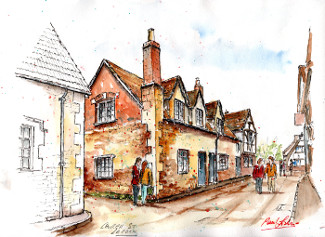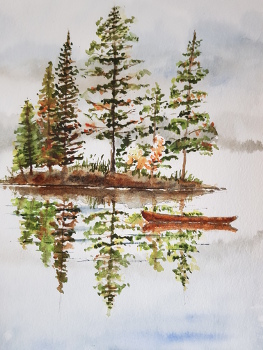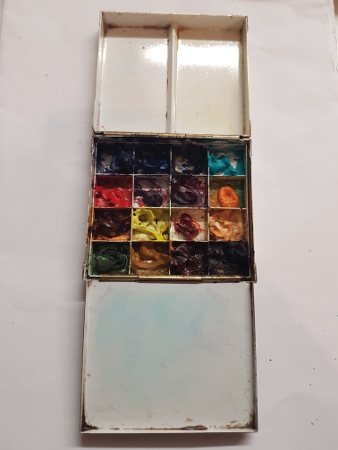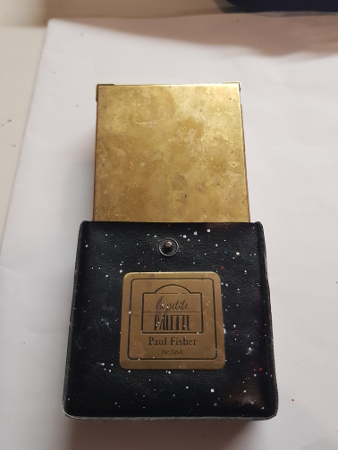
|
|
|
|
HOW I PAINT
|
|
| I
started my painting career with watercolour and then went on to try
acrylics, oils and pastels before finally going back to watercolours
where I found that I loved the way that the paper acted with the water
and pigments to get effects which you just cannot get with the other
mediums.
Two aspects which I really enjoy with watercolours are the way a damp piece of paper allows you to get soft, 'fuzzy' effects for animal portraits and clouds and far-off misty landscapes and secondly, how it allows you to mix colours on the paper 'wet into wet' - allowing the paints to do 'their own thing'. In the main, I either paint freely with minimal drawing and using a lot of 'wet into wet' or, using the Pen & Wash technique using the pen in a very sketchy way to give the impression of movement and dynamism. Below you will find links to pages showing how I use both methods. Towards the bottom of this page I describe some of the equipment and materials I use.
|
|
|
EXAMPLES OF HOW I PAINT MY WATERCOLOURS |
|
 |
 |
| Pen & Wash | Wet into Wet |
| EQUIPMENT | |
| Palette
- I use tube watercolour paints and not pans - I find
them much more vibrant and intense. I do use them directly from the tube
but mostly I squeeze them into a palette.
I have a number of palettes - I love the Frank Herring plastic folding palettes mainly because they are very reasonable in cost and I have used the Cloverleaf palette with it's fold out mixing trays which again is brilliant and light in weight. The John Pike palette is excellent for large washes and I have a handmade metal Craig Young palette - again lovely to use but a bit heavy. My favourite and the palette I now constantly use is the handmade Sketchers Petite Palette which is beautifully made and light - https://lapetitepalette.com/. It comes in it's own leather pouch and fits snuggly into your palm.
|
|
 |
 |
| Brushes
- high quality brushes are a must - in my studio I use Da
Vinci Maestro Koblinski Sable Series 10 or 35 watercolour brushes and
for plein-air work I use Rosemary & Co Series 301 synthetic.
|
|
| Ink Pens - I tend to use Micron Pigma permanent ink pens and where I want to use non-waterproof pens I use a Lamy fountain pen. | |
| MATERIALS | |
| Paper
- I do a lot of work in sketchbooks and I have used many
- Moleskine, Stillmans & Birn, Khadi, Seawhite - but my
favourite is Hahnemuhle - it has just the right amount of roughness and
the quality is consistent.
For framed paintings I use Arches 300gm Rough or NOT - I just love the water holding capability of Arches over Saunders or Bockingford. |
|
| Paints
- again high quality watercolour paints are worth
investing in - overall, the best I find are Winsor & Newton
especially for the 'earth' colours (Yellow Ochre, Burnt Sienna, Burnt
Umber etc). For some of the more unusual colours I use, Daniel Smith
have an excellent range.
In my palette above, my preferred colours (top left to bottom right) are: French Ultramarine (W&N), Cobalt Blue (DS), Paynes Grey (W&N), Cobalt Teal Blue (DS), Pyrrol Red (DS), Alizarin Crimson (W&N), Quinacridone Violet (DS), Indian Yellow (W&N), Quinacridone Gold (DS), Lemon Yellow (DS), Quinacridone Sienna (DS), Naples Yellow (DS), Green Apatite Genuine (DS), Yellow Ochre (W&N), Burnt Sienna (W&N), Burnt Umber (W&N). |
|